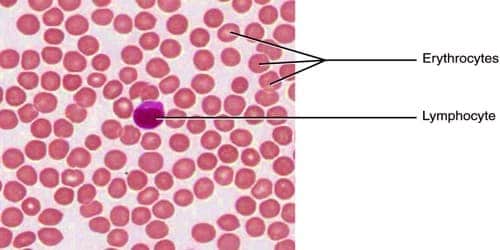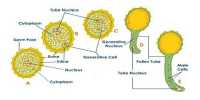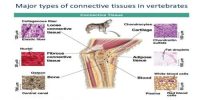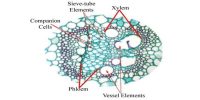Fluid connective tissue is that assembly of cells which make relations between different organs, thus tissues by their fluid atmosphere. The relations are regularly intended for supplying nutrients, gases (O2 and CO2) necessary for the cells for their living. It helps hold our body together, supports other tissues and even transports substances.
The fluid connective tissue is mostly blood and lymph.
Structural Characteristics: Matrix of this tissue is liquid. In the matrix, there are various types of organic materials in the form of a colloid.
Function: The main function of vascular tissue is to maintain circulation in the interior of the body and resistance from the disease. This tissue is of two types: Blood and Lymph.
(1) Blood: Blood is a type of alkaline, slightly saline, red coloured, liquid connective tissue. Flowing through the artery, veill and capillaries, blood takes part in internal circulation. Blood is the fluid that runs in our body transporting substance from one part to another. Blood, blood vessels and heart together form a circulatory system. It consoles our erythrocytes, leucocytes, thrombocytes.

Fig: Different types of blood cells
Structural Characteristics: Blood is formed of two components:
- Plasma: It is the liquid part of blood. It is straw coloured. It contains (91-92) % water and (8-9) % organic and inorganic materials. The organic substances include various types of blood protein and waste materials. The inorganic part contains different minerals like sodium, potassium, iron. calcium, magnesium etc.
- Blood Cell or Blood Corpuscles: Blood corpuscles form the major components of blood. Blood cells are of three types. These are:
Red Blood Corpuscle or Erythrocyte: These blood corpuscles contain haemoglobin. Due to haemoglobin colour of blood is red. the red blood corpuscles of the amphibians are biconvex, nucleated and oval. On the contrary, the red corpuscles of the blood of mammals are biconvex, non-nucleated and round. Haemoglobin is combined with oxygen forms an unstable compound oxyhaemoglobin. It breaks down and releases oxygen in places where it is needed.
Functions: To, carry oxygen and some carbon dioxide.
White Blood Corpuscle or Leucocyte: These generally lack definite shape and are nucleated. The cytoplasm of white corpuscles is either granular or non-granular.
Functions: To destroy germs and take part in self-defence.
Thrombocyte or Platelets: These are present in the blood of vertebrate animals. These are usually nucleated and spindle-shaped. The nucleus is absent in the Thrombocytes of mammals. The thrombocyte of the mammal is also called platelet.
Function: Thrombocytes take part in blood coagulation or blood clotting.
(2) Lymph:- The fluid materials stored in the spaces between different tissues are collected by some small vessels. These small vessels are united together to form larger vessels. The system formed by these vessels known as the lymphatic system. These vessels are lymph vessels and the’ fluids are lymph. The large lymph vessels enter the vain in the shoulder region of man. There are some cells in the lymph known as the lymphocyte.
Lymph is a kind of slightly alkaline, transparent -and yellow coloured fluid. It is more of a defensive fluid as it consists of a lot of leucocytes and it kills all the distant body.














